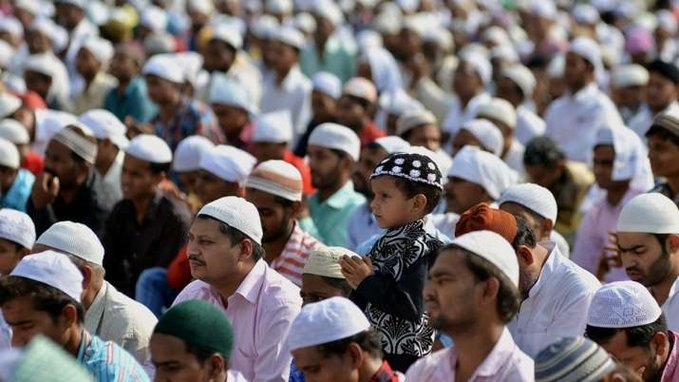Shocking! Muslim population in 116 villages increased by 32%
Based on the latest records of Gram Panchayats, the Police of Uttar Pradesh and Assam have sent separate reports to the Union Home Ministry depicting the change in demographics in the last ten years in the border areas of Nepal and Bangladesh.
Total Views |
Lucknow, Aug 5: Intelligence agencies have recommended increasing the range of Border Security Forces (BSF) to 100 KM, owning to the unexpected demographic change in the border areas. As per reports, the Muslim population in border areas has increased by approx 32 percent, significantly above the national average.

Based on the latest records of Gram Panchayats, the Police of Uttar Pradesh and Assam have sent separate reports to the Union Home Ministry depicting the change in demographics in the last ten years in the border areas of Nepal and Bangladesh.
As per the reports, the population of Muslims in border districts has increased by approx 32% since 2011. On the contrary, the population change across the country has been somewhere between 10% and 15%. Security agencies and state police have described the demographic change as very sensitive in the context of national security. Hence, both Assam and UP have recommended that the scope of the jurisdiction of BSF should be increased from the present 50 KM to 100 KM. If it happens, BSF will have the right to search and investigate areas up to 100 KM from the international border. Dainik Bhaskar quoted an unnamed official from the Union Home Ministry saying that the change in demographic is not just about the increase in population. It could be a new design of infiltration in India. “Therefore, keeping national security in mind, have to make strong preparations from now on. That is why the security agencies of Assam and UP have suggested increasing the scope of BSF,” he said. It is noteworthy that the Home Ministry increased the BSF’s jurisdiction from 15 KM to 50 KM in October 2021. While some states have objected to the increase from 15 KM to 50 KM, UP and Assam have recommended further increases. As per UP Police, the population of Muslims has increased by more than 20% since 2011 in five districts that are Pilibhit, Kheri, Balrampur, Maharajganj, and Bahraich. All these districts share borders with Nepal. One of the biggest challenges that the state Police are facing is determining how many new Muslim families who have settled in the area have valid documents and how many are illegal. Security agencies suspect that many of these people may be illegal immigrants. There are around 1,000 villages in 5 border districts of UP. Out of these, 116 have more than 50% Muslim population. Around 303 villages have a Muslim population anywhere between 30% and 50%.
Also Read: Congress leader Kuldeep Bishnoi joins BJP
Not only the number of Muslims but the number of mosques and madrasas have also increased in these districts by at least 25% from April 2018 to March 2022. As per reports, compared to 1,349 mosques and madrasas in the border districts in 2018, the number stands at 1,688.


